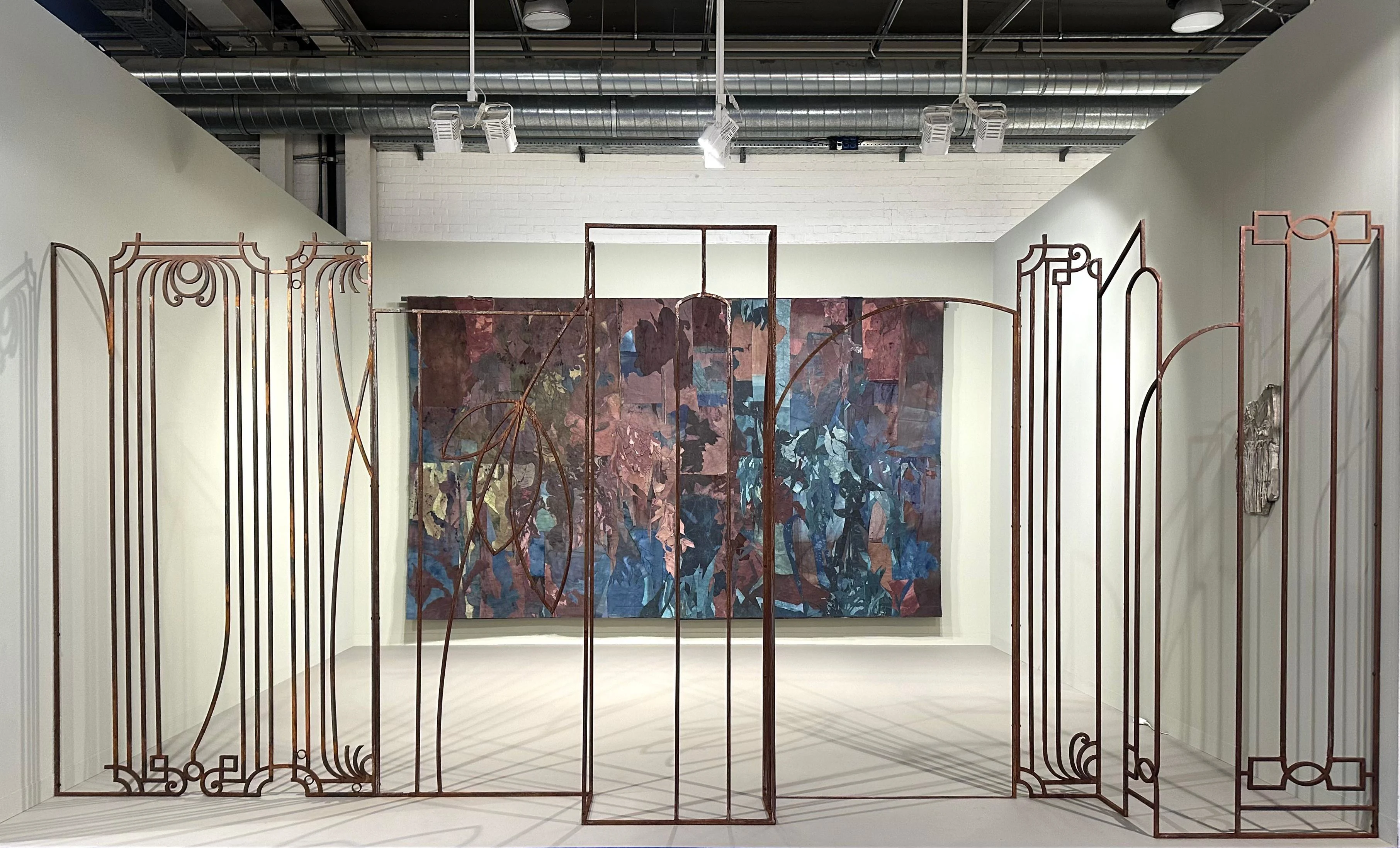
Nour Jaouda
The shadow of every tree
Dyed fabric, Steel gate and concrete installation, with gray walls
Fabric: 280 x 470 cm
Steel gate: 520 x 230 cm
Concrete: 63 x 40 x 4 cm
2024
Nour Jaouda (Libyan, born in 1997) became known to bigger audiences during the last Venice Biennale, Foreigners Everywhere, curated by Adriano Pedrosa. Her large textile wall-works, made out of dyed fabrics that were cut and layered on top of each other, received a lot of public attention and joined important international museum collections after the Biennale ended.
The artist searches for fabrics in markets near her homes in Cairo and London, dyes them using a wide array of vegetal dyes in saturated natural tones, then stitches them into tapestries. Thanks to the layers of stitched fibers, their surface becomes rough, with a three-dimensional quality reminiscent of landscapes full of touchable plants and trees. These landscapes – real and remembered – are places where the artist aims to explore themes of memory, reconstruction, and belonging. Her tapestries, and also her sculptures, address the existence and interpretation of cultural motifs, social habits, and historical narratives that permanently change.
The installation The shadow of every tree (2024) consists of a monumental textile work, a metal gate, and a concrete wall piece. The tapestry’s vivid hues and fluid shapes evoke a natural landscape – the recurring theme in the artist’s work. Suspended on the wall, the textile work hangs behind a towering metal gate that looks to both Islamic motifs and the colonial architectural legacies of the British Empire. The third element of the installation is a concrete fragment of a wall with Islamic ornaments. By incorporating fragments of real gates, salvaged from metal yards in Cairo, and the wall fragment into the design, Jaouda highlights the tension between preservation and decay, as well as cultural multiplicity. “The gate denies direct access to the piece, yet beckons exploration,” she explained. “Its aesthetic power draws us in, yet denies us entry, compelling us to deconstruct the social and cultural boundaries we encounter and impose on one another.”